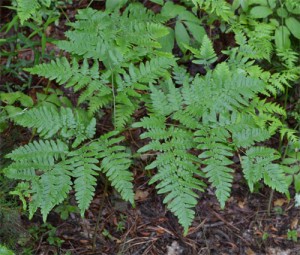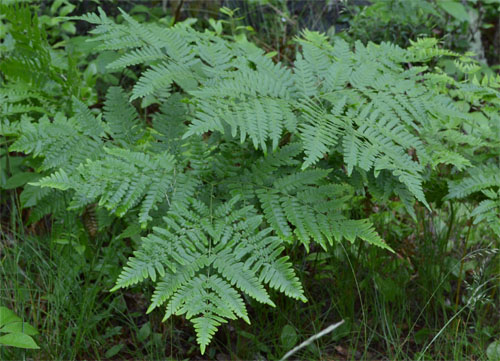 This very adaptable fern finds its home in most of the northern hemisphere. It is abundant in disturbed areas on Cape Cod, and is the fern most often found next to roads. It readily moves into new ground, when given the chance.
This very adaptable fern finds its home in most of the northern hemisphere. It is abundant in disturbed areas on Cape Cod, and is the fern most often found next to roads. It readily moves into new ground, when given the chance.
The fiddleheads are eaten in some places, such as Japan, but this particular fern contains the carcinogenic compound ptaquiloside. Some of the Japanese communities where this fern is part of the regular diet have some of the highest stomach cancer rates in the world. Even the spores of the bracken fern have been shown to contain carcinogens. Other chemical compounds can be found in the bracken fern as well – there is some evidence that this is because this species is a practiced survivor of interspecies warfare: Fossil evidence suggests that bracken fern has had at least 55 million years to evolve and perfect antidisease and antiherbivore chemicals. It produces bitter tasting sesquiterpenes and tannins, phytosterols that are closely related to the insect moulting-hormone, and cyanogenic glycosides that yield hydrogen cyanide (HCN) when crushed. It generates simple phenolic acids that reduce grazing, and may act as fungicides.

Frond detail of bracken fern

bracken fern along Weir Road June 12 2011
Leave a Reply